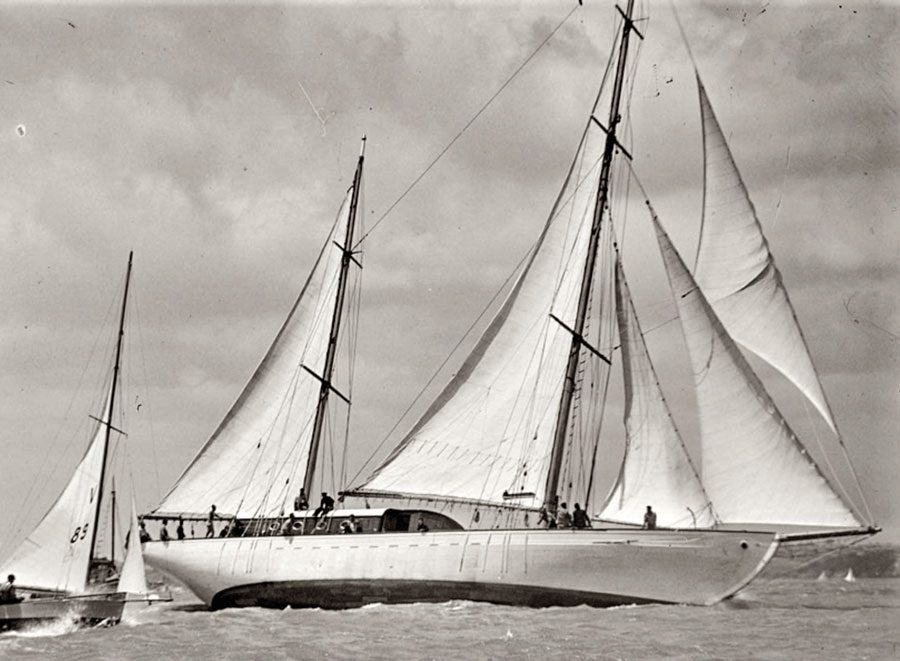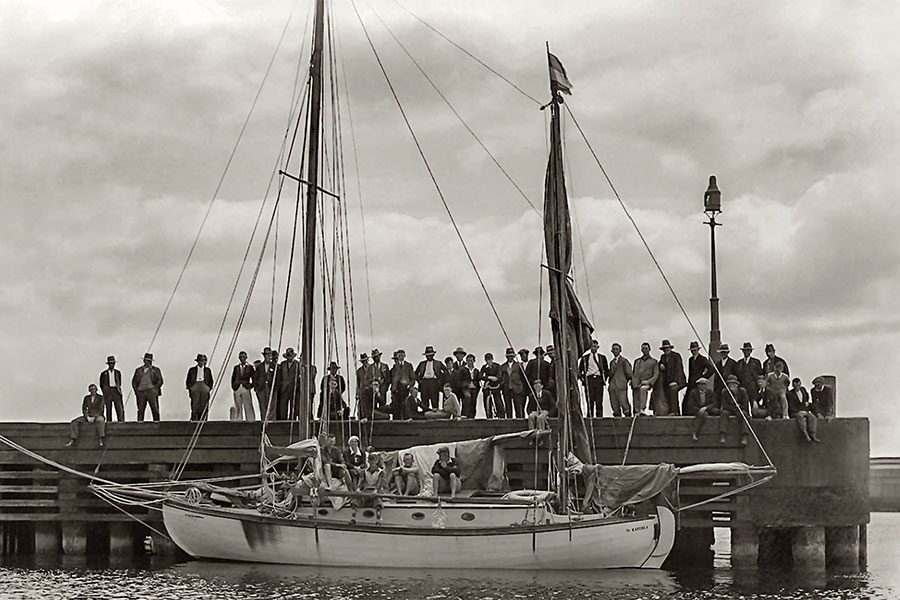

Jimmy Sinclair’s Mascotte was not only the Champion yacht of Lyttelton from 1891, he was also New Zealand Champion in 1892 and 1893.
Jimmy had continually modified his Little Wonder to meet the challenge of the Millers’ Pastime but the Lyttelton Regatta on 1st January 1890, when Pastime beat Little Wonder by a whopping 50 minutes, made it clear that the latter’s days were over. A few weeks later, circumstances arose that decided Sinclair to build a 14-tonner, the 53-foot Mascotte, to take command in Canterbury waters.
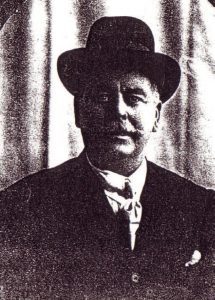
Building, ballasting and rigging such a large yacht required a lot of money. Jimmy was married now with three children so had to pass the hat around the port and extend his existing “Little Wonder Syndicate.” Jimmy was owner and sailing master.
The men who put up the rest of the funds were the crew, and from time-to-time included Walter Haden, John Haydon, Joseph Garland, Alex Wheatley, William Marriott, W. Bulkley, F. Green, W. Petheram and John Collins. For a successful yacht prize money was large and the potential for a profitable sale made it somewhat of a business proposition.
Jimmy was a student of overseas yacht design. Overseas rating rules were still, by and large, observed by New Zealand Regattas and Yacht Clubs. The Thames Tonnage rules of 1855, which penalised a yacht’s breadth but not depth, were abolished in 1886. They had given rise to increasingly absurd “plank on edge” or “lead mine” freaks.
The new rating rule taxed only waterline and sail area, which resulted in the more efficient and sea kindly form of the yachts of the classic period from the early 1890s, but they took some time to filter through to the Antipodes.
For example, in 1888, Robert Logan had designed his Akarana to race in Melbourne under the Thames rules, but the races were sailed under the new rules. During this transition period, Jimmy decided on the plan of Saraband in one of Dixon Kemp’s books of yacht designs, by no means a modern design, harking back to Robert Hewitt’s successful Buttercup of 1880, but a pretty boat with her clipper bow, easily-driven and weatherly.
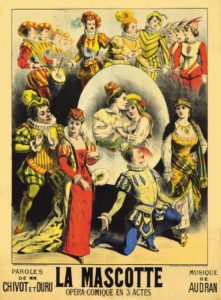
The Earl of Onslow, recently an unpopular Governor General who had been patron of the Wellington Regatta in 1891, wrote in 1895:
“Perhaps the most interesting yacht now sailing in New Zealand waters is the Mascotte, both on account of the circumstances under which she was built, as well as for the remarkable success which has attended her during her sailing career. In the year 1890 a strike in the shipping trade broke out in Australia, and after a few days was extended to other trades connected with shipping, finally spreading to New Zealand.
“During the enforced idleness of certain shipbuilding hands at Lyttelton, the port of Christchurch, some of the men bethought themselves of laying down the lines of a yacht for themselves. The Mascotte, commenced under these circumstances, was found, when finished, to be an exceptionally fast sailer. Within 18 months of her completion she was manned and sailed by her owners in six regattas, netting for them £395 besides numerous smaller prizes in club races – not a bad outcome of work which, at the time, was doubtless done with no little amount of grumbling, because no wages were coming in weekly on account of it.”
Jimmy Sinclair laid her keel in May 1890 on reclaimed land at Lyttelton and launched her in September from the nearby Graving Dock, less than five months under construction. His eldest daughter Barbara, then aged nine, christened her Mascotte after the main character, Bettina, the “mascot” or luck-bringer, in the popular French three-act comic opera by Audran, La Mascotte which toured New Zealand several times from 1884.
Mascotte’s dimensions were: loa 53ft, lwl 40ft, beam 7ft 11ins, draught 9ft. She was built of a single skin of one-inch kauri, with angle iron frames fastened with galvanised iron bolts, a ticking time bomb waiting for rust. Her sail area was 3,000ft².

The length of her mast was 40ft, top mast 22ft, boom 38ft, gaff 28ft, luff of mainsail 22ft, after leech 40ft, bowsprit 22ft, spinnaker boom 19ft. For ballast she had seven tons of lead moulded outside in an iron case and 7 tons inside, 14 tons in all.
She had an elliptical stern, a long raking counter and a clipper bow. The sails were made by Messrs R. Forbes and Co. and the iron work by Mr Dalley. “She was entirely a local Lyttelton production and reflected great credit on all the trades concerned, especially the shipwrights, W & J Sinclair.”

The first meeting between Mascotte and Pastime was at Akaroa in December 1890, when Mascotte showed she was faster and better to windward. At the Lyttelton Regatta in January 1891 there was the same result, Mascotte first, Pastime, second and the Henry Berg-built 9-tonner Mima (ex-Florence), down from Wellington, third.
That same month Jimmy Sinclair and Malcolm Miller decided to sail their yachts up to Wellington for its regatta with a first prize of £75. Miller was also keen to sell Pastime there. The New Zealand Mail reported: “The only boat that has beaten Pastime since she has been lengthened is the new craft Mascotte and when it is remembered that one is double the size of the other, it need hardly be wondered at… Mr. Miller is anxious to build a larger boat to sail against Mascotte with the view of turning the tables on the enterprising owner of the new craft.” Pastime did not sell; in fact she remained in Miller family ownership until 1963.

Both Mascotte and Pastime had a rough trip up the coast. ‘Boat ‘Arbour Bill’ (Paul Freyberg, who died at Ypres in June 1917) told the story in the New Zealand Yachtsman Magazine in 1915.
“Their racing spars were brought up to Wellington by the Penguin. The Mascotte left the southern port at 8.15am on the 14th January with a light S.E. At 5pm the topsail was taken in and the topmast struck. At midnight Kaikoura was passed, the wind freshening fast, and oil was thrown on the water astern by means of a squirt, the same device being used by the Pastime.

“Friday morning it was blowing a gale and raining hard. At 1.48am all hands were called on deck to take in the mainsail, and while this was being carried out a big sea broke on board filling the mainsail and splitting the main boom. Sinclair was thrown into the mainsail and Buckley and Petheram were washed overboard, all three however, fortunately getting back again, Sinclair scrambling back and the other two being assisted by other members of the crew on deck.
“It was an exceedingly narrow escape for all three. After clearing away the wreckage (the mainsail was torn to pieces), the Mascotte ran before the gale for seven hours under poles. Passing Cape Campbell, a staysail and part of the damaged mainsail was set, as a heavy sea was running off the Cape, and Oyster Bay, Port Underwood was reached at 11.20am Friday morning.

“The Pastime, which had left Lyttelton the day previously, was ahead of the Mascotte, as she passed the lighthouse at Cape Campbell at 12.30am Friday morning in a gale of wind with hard rain squalls. Between Kaikoura and Port Underwood she ran under reefed staysail only, and off Cape Campbell had a rather exciting experience, as owing to the rain and darkness she ran in between the Shepherdess Reef and the mainland – so close that a biscuit could have been tossed on to the reef.
“Port Underwood was reached at 7am. The Mascotte’s crew were greatly relieved to find the little Pastime safely at anchor in Oyster Bay, and cut a boom out of the bush to which they fitted a small mainsail belonging to the Pastime, for the trip across the strait. A start was made from Port Underwood by both boats at 4pm on Saturday, and after a fine passage with light winds they finally arrived off Port Gordon at 4pm Sunday, January 18th.”

The big race was on January 22nd 1891. The entries were the Lyttelton yachts Mascotte (Sinclair, 14 tons, scr), Pastime (Miller, 7 tons, 13m 13s), and the Wellington yachts Girola (Rawson, 7.1 tons, 12m 55s), Xarifa (E.C. Mills, 9.4 tons, 7m 25s), Isca (J.H. Jack, 7 tons, 13m 13s) and Mima (W. McKinstry, ? tons, 8m 13s). Vereker Bindon’s 12-ton Auckland yacht Maritana had entered but became weatherbound at Castle Point.
In a fine northerly breeze, Mascotte took the gun and won on handicap, Mima was second and Pastime third. “The win of the Mascotte was very popular, and as she passed the flagship at a stunning pace and careening low to her immense spread of canvas, she was lustily cheered.”
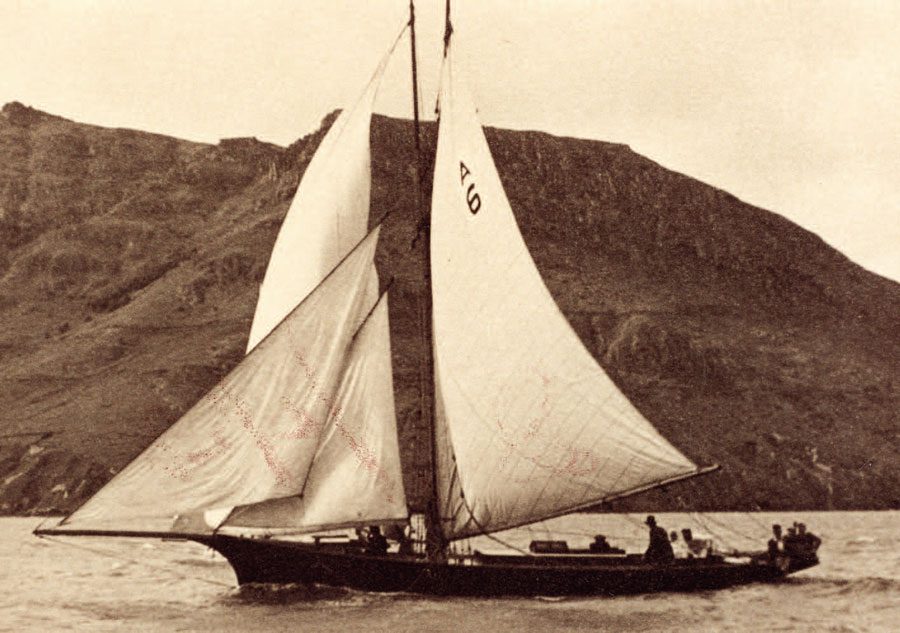
After Maritana arrived the following day, a special race was put on for her by the Port Nicholson Yacht Club on 24th January. Mascotte again beat Mima, Maritana was third over the line and Pastime gained third on handicap. These two gripping races with the spice of the entries from Auckland and Lyttelton had attracted huge crowds of Wellingtonians on the wharves, around the harbour and on following ferries.
During the festivities after the races, the yachtsmen present, representing the Auckland, Wellington and Lyttelton yacht clubs, met to form the New Zealand Yacht Racing Association. The sole aim was to set up annual races for the First- and Second-Class New Zealand Championships, and to encourage the country’s major yachts to sail around the coast to each event.
This was probably inspired by the many entries in the 1888 Victoria International Regatta at Melbourne which had attracted entrants from most of the Australasian colonies. The first Championship races were to be held in conjunction with the Wellington Anniversary Regatta in January 1892.
Mascotte was to feature large in the first two of these Championships.

